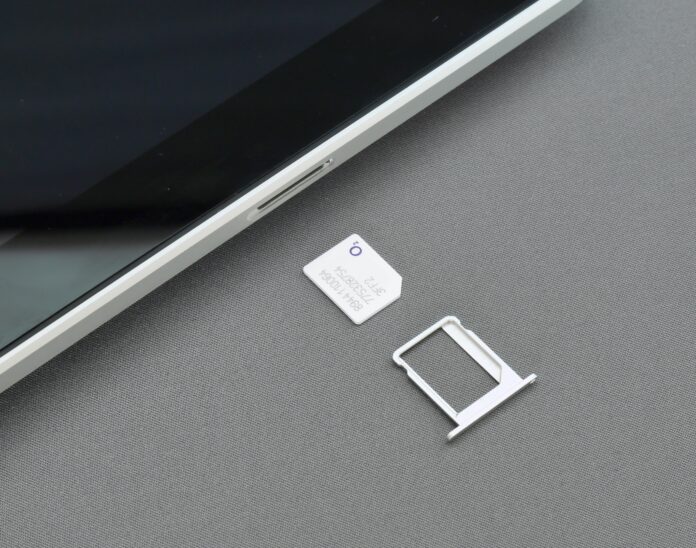eSIM, short for embedded SIM, is a technology that has gained significant attention in recent years due to its potential to revolutionize the way we use and manage mobile devices. It is an electronic SIM card that is embedded directly into a device, such as a smartphone, tablet, or smartwatch, eliminating the need for a physical SIM card. This virtual SIM card can be programmed and reprogrammed over the air, allowing users to switch between mobile network operators without needing to physically swap SIM cards. The eSIM technology has the potential to bring about a range of benefits and opportunities for consumers, mobile network operators, and device manufacturers.
Now, let’s dive deeper into the five important things you should know about eSIM:
1. Enhanced Flexibility and Convenience:
One of the key advantages of eSIM is the flexibility and convenience it offers to users. With an eSIM-enabled device, you can easily switch between different mobile network operators by simply selecting the desired operator’s profile on your device’s settings. This eliminates the hassle of physically obtaining a new SIM card and inserting it into your device. For frequent travelers, eSIM can be especially beneficial as it allows you to connect to local networks abroad without needing to buy a local SIM card. Additionally, eSIM enables the use of multiple mobile network profiles on a single device, making it possible to have separate profiles for personal and business use or to switch between data plans based on your needs.
2. Space-saving and Design Advantages:
eSIM technology offers significant space-saving advantages, particularly for smaller devices like smartwatches and fitness trackers, where physical SIM card slots may not be feasible. By eliminating the need for a traditional SIM card slot, device manufacturers can utilize the extra space for other components or reduce the overall size of the device. This opens up possibilities for sleeker, more compact designs, and allows for greater innovation in wearable technology. Additionally, the absence of a physical SIM card slot means that devices can be made more resistant to water and dust, as there are no openings that can compromise the device’s integrity.
3. Simplified Connectivity for IoT Devices:
The Internet of Things (IoT) has rapidly grown in recent years, connecting a wide range of devices and enabling seamless communication between them. eSIM technology plays a crucial role in simplifying connectivity for IoT devices. Instead of relying on physical SIM cards that need to be manually provisioned, devices can come embedded with eSIMs that can be remotely provisioned and managed. This enables easy deployment and management of large-scale IoT deployments, allowing devices to be activated and connected to the desired network with minimal effort. With eSIM, IoT devices can seamlessly switch between different network operators based on signal strength, cost, or other factors, ensuring optimal connectivity at all times.
4. Enhanced Security and Protection:
eSIM offers enhanced security features compared to traditional SIM cards. Since eSIMs are embedded directly into the device’s hardware, they are more resistant to physical tampering and unauthorized access. This makes it more difficult for attackers to remove or clone the SIM card, providing an additional layer of protection for user information and mobile communications. Furthermore, eSIM technology supports remote SIM provisioning, which enables network operators to securely and remotely manage SIM profiles on devices. This capability enhances security by allowing network operators to revoke compromised profiles or issue updated profiles with enhanced security measures, protecting against potential threats.
5. Evolving Industry Support and Adoption:
eSIM technology has gained significant momentum and industry support in recent years. Major mobile network operators around the world have started embracing eSIM, offering compatible plans and services to their customers. Similarly, device manufacturers have been gradually incorporating eSIM technology into their devices, including smartphones, tablets, smartwatches, and laptops. As eSIM continues to gain traction, it is expected that more operators and manufacturers will join the ecosystem, providing users with greater choice and availability. The adoption of eSIM technology is also driving the development of new use cases and innovative services, such as seamless connectivity across devices, wearables, and IoT deployments.
6. Cross-Device Synchronization and Seamless Connectivity:
eSIM enables cross-device synchronization, allowing users to connect multiple devices to the same mobile network profile. For example, you can have your smartphone, tablet, and smartwatch all connected to the same eSIM profile, sharing the same phone number and data plan. This provides a seamless experience as you can receive calls, messages, and notifications across all your devices without the need for manual synchronization. It also allows for easy transition between devices, as you can switch from your smartphone to your tablet or smartwatch without any interruption in connectivity.
7. Over-the-Air Provisioning and Remote Management:
eSIM technology facilitates over-the-air provisioning and remote management of SIM profiles. Mobile network operators can remotely activate, update, or deactivate eSIM profiles on devices without the need for physical SIM card replacement. This feature enables a seamless and convenient user experience, as users can easily switch between different mobile network operators or data plans directly from their device settings. It also simplifies the onboarding process for new subscribers, as they can activate their eSIM profiles remotely without visiting a physical store or waiting for a SIM card to be shipped.
8. Global Roaming and Local Connectivity:
eSIM technology offers significant benefits for travelers. With an eSIM-enabled device, you can easily connect to local networks when traveling abroad without the need to purchase a physical SIM card. This eliminates the inconvenience of swapping SIM cards and allows for a hassle-free roaming experience. By leveraging eSIM capabilities, users can choose from various local mobile network operators and data plans directly on their devices, ensuring affordable and reliable connectivity wherever they go.
9. Support for Different Form Factors:
eSIM technology is not limited to smartphones; it can be implemented across a wide range of devices and form factors. From wearables like smartwatches and fitness trackers to laptops, tablets, and even automobiles, eSIM provides a scalable and flexible solution for connectivity. This versatility opens up possibilities for innovative applications in various industries, including healthcare, logistics, automotive, and more. For instance, eSIM enables seamless integration of connectivity in smart home devices, allowing them to communicate with each other and with external services without relying on Wi-Fi.
10. Environmental Impact and Sustainability:
eSIM technology also contributes to sustainability efforts. By eliminating the need for physical SIM cards, eSIM reduces electronic waste generated from discarded SIM cards and simplifies the recycling process for electronic devices. Moreover, eSIM enables device manufacturers to design more compact and lightweight devices, which can lead to energy savings during production, transportation, and usage. As the adoption of eSIM expands, it has the potential to make a positive impact on the environment by promoting eco-friendly practices within the mobile industry.
In conclusion, eSIM technology offers enhanced flexibility, seamless connectivity, and remote management capabilities. It simplifies the user experience, provides global roaming options, and supports various device form factors. Additionally, eSIM contributes to sustainability efforts by reducing electronic waste and promoting eco-friendly practices. As the industry continues to embrace and develop eSIM technology, we can expect further advancements, expanded compatibility, and a broader range of services that will enhance the way we connect and interact with our devices.


















